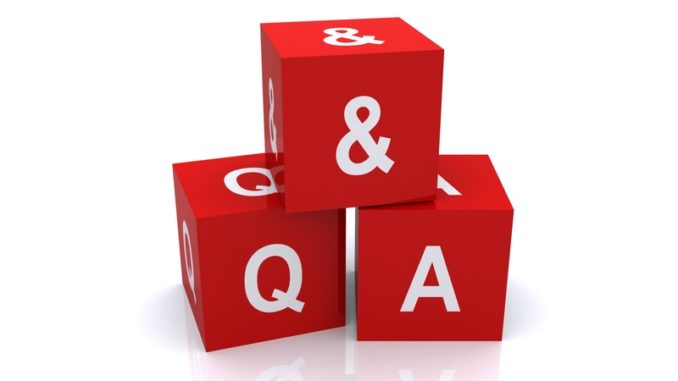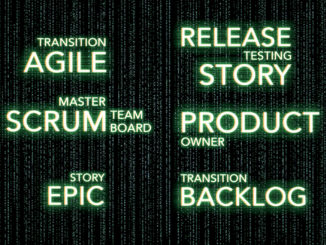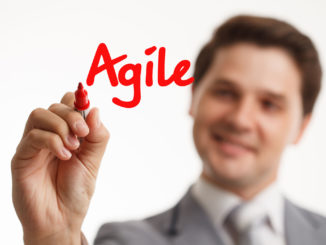
What follows is a recent interview with Chris Forde, Vice President of Enterprise Architecture and General Manager, Asia Pacific, The Open Group.
What is driving the adoption of the Agile approach?
The Agile approach is having a profound impact on both software development methods and the organization of IT departments. Agile teams have become the norm for driving digital transformation and, in turn, inventing new business models, delivering a superior customer experience, and building digital products and highly automated operating models. Last year, the 14th State of Agile Report found that 95% of organizations are now practicing Agile, with businesses citing the top reasons for adoption as its ability to accelerate software delivery and enhance the management of changing priorities.
While Agile practices and approaches were originally created for software development, Agile thinking has become so popular that it is now being applied to enterprise projects in different industries, from retail to finance. With the global pandemic bringing a large degree of uncertainty to many businesses, the need for agility and digital transformation has never been greater. Agile transformation has therefore become a necessity in the shift to becoming a digital-first enterprise.
Adopting Agile at scale, however, can be a difficult, particularly for large organizations. In many cases, its deployment comes at the expense of architecture, causing a number of business-critical set-backs. For this reason, Enterprise Architecture (EA) is crucial in the transition to an Agile, digital-first culture – and must be a major concern throughout the process.
Who in the enterprise is driving the growing adoption of Agile?
The stakeholders driving Agile transformation differ depending on the size of the business. In smaller organizations, a few Agile/DevOps teams can coordinate change amongst themselves, and the lines to management are short enough that strategic direction can be conveyed to teams directly. In large organizations, however, there may be hundreds of Agile teams, each working on a part of the big “enterprise machine”, and more coordination is needed. If your Agile teams build silos that disregard the wider business environment, you will still not have an adaptive and flexible end result – and future change may become even more difficult.
When it comes to adopting Agile at scale, then, it is important to keep in mind that there is more to an enterprise than software, which is why architecture is key. The “big picture” view offered by EA adds value as it encompasses a range of stakeholders, not just software users. Combining architecture with Agile also encourages stakeholders to think about desired outcomes, capabilities that need to be developed or improved, resources required, business processes, IT and physical infrastructure that needs to realized, and more
From the point of view of governance, EA provides the guardrails for Agile developments, ensuring that the deliverables coming from different Agile delivery teams are aligned with the overall view and strategy of the business. Not only that, applying EA also makes sure that all outcomes address interoperability issues and meet compliance and regulatory requirements
Are there any specific examples of Agile that can be highlighted in the tech industry?
During The Open Group Digital-First event, Société Générale and Fidelity Investments outlined their experiences of scaling Agile to boost client experience, the “north star” of Agile transformation. Société Générale had the goal of providing a seamless client-to-client experience, while Fidelity adopted a customer-in perspective via Customer Journey Maps, and the associated Jobs-To-Be-Done.
Despite these Agile transformation journeys beginning in each organization’s IT department, it changed to an enterprise wide transformation which involve the wider business. As such, they have shifted from a siloed organization to an integrated business/IT organization driven by value that uses industrial digital service platforms.
Both Société Générale and Fidelity adopted new organizational models inspired by Spotify. In practice, this meant setting up Tribes and Feature Teams, or Squads aligned to business Value Chains. The organizations also use The Open Group Open Agile Architecture™ (O-AA) Standard, which is tailored to meet the specific circumstances of the enterprise and support Agile at scale.
Throughout the Agile transformation process both organizations changed their mindset, behaviors, and governance. Fidelity, for example, adopted leadership principle such as being client obsessed, enabling candid debates, and empowering others to make decisions. Meanwhile, Société Générale altered the way it manages demand and allocates resources to projects.
What will The Open Group be doing in 2021 to perpetuate Agile?
Last year, The Open Group launched the O-AA Standard to support Agile at scale. The Standard documents specific best practices and techniques for architecting with agility, focusing on the needs of organizations undergoing digital transformation.
The O-AA Standard is complementary to the TOGAF® Standard, which supports EA as a discipline and a role. Both can be used together as part of the Architect’s Toolkit, a portfolio of standards from The Open Group that are pertinent for Architects in the digital age. Additional standards in the toolkit include the Digital Practitioner Body of Knowledge™ Standard and the IT4IT™ Reference Architecture.
The TOGAF Standard provides the framework and methodology through the TOGAF ADM and TOGAF content framework that can support an Agile delivery of architecture descriptions. The O-AA approach goes deeper, providing the set of building blocks and best practices to address specific Agile related topics, so it can be used to adapt the TOGAF method.
The TOGAF Standard is also due to include a set of guides that demonstrate how to apply Agile techniques to EA work, and how to use the TOGAF Standard to help enable enterprise agility. There is also a very active Agile working group within The Open Group Architecture Forum that is developing further guidance on using the TOGAF Standard in an Agile context. Importantly, this material is based on the real-world experiences of our Members.
Looking ahead, The Open Group has a roadmap for adding more depth and content to the O-AA Standard. To do this, the team is following what they call a “playbook approach”. For example, an O-AA™ Security Playbook has now been published and other playbooks covering different topics will be delivered in due course.



